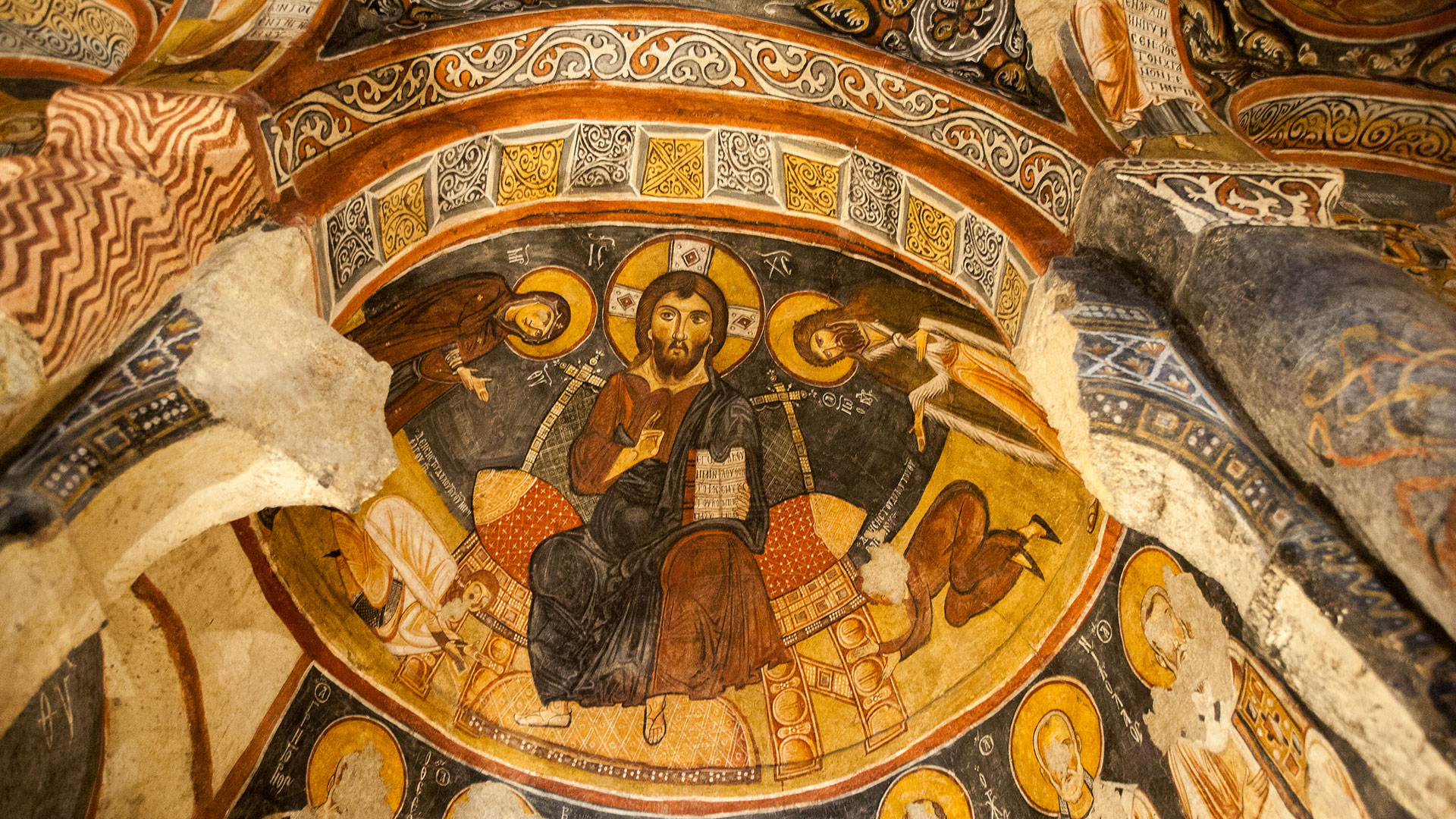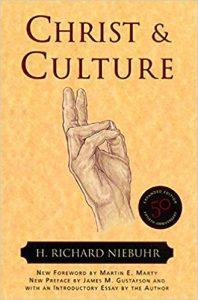
 “The many-sided debate about the relations of Christianity and civilization is being carried on in our time.” This one sentence sums up the enduring problem: how to understand “the relations of Christianity and civilization.”
“The many-sided debate about the relations of Christianity and civilization is being carried on in our time.” This one sentence sums up the enduring problem: how to understand “the relations of Christianity and civilization.”
H. Richard Niebuhr’s classic book Christ and Culture explores the ways Christians have understood the way faith relates to culture. His work remains relevant today, especially for those preparing to cross cultures in service to Christ.
Niebuhr groups the multiplicity of voices on the relationship between Christ and culture into five main positions. Let’s summarize them and consider their implications.
1. Christ against Culture
“Whatever may be the customs of the society in which the Christian lives, and whatever the human achievements it conserves, Christ is seen as opposed to them, so that he confronts men with the challenge of an either-or decision”—either Christ or culture. Niebuhr sets forth the biblical basis for this view, emphasizing Matthew, Revelation, and 1 John 2:15–16. He comments “that the world appears as realm under the power of evil; it is the region of darkness into which the citizens of the kingdom of light must not enter.”
Niebuhr identifies the central weakness of this position—it is a self-defeating denial of culture. “It affirms in words what it denies in action; namely, the possibility of sole dependence on Jesus Christ to the exclusion of culture.”
Radical Christians, as he terms them, who view Christian belief as opposed to culture “are always making use of the culture, or parts of the culture, which they ostensibly reject.” They fail to recognize that they speak as though they were separated from the world and its culture when, in fact, they are not.
2. Christ of Culture
“Jesus is the Messiah of society, the fulfiller of hopes and aspirations, the perfecter of the culture’s true faith, the source of its holiest spirit.” Christians who embrace this position are the polar opposite of radical Christians opposed to culture. These are believers who are at home in Christ and in their culture, sensing no tension between the world and the church. These believers are “this-worldly” oriented.
Niebuhr offers examples of those who accommodate Christ to culture: Judaizers who accommodated Christ to the cultural traditions of the Jews, and Gnostic Christians who accommodate Christ to the science and philosophy of their day. If Christ is a great moral teacher (like Socrates and Plato), then all conflict between Christ and culture has been eliminated. Niebuhr objects to this position on the grounds that cultural Christians compromise Christ because loyalty to culture has exceeded loyalty to Christ.
“The real issue is not church versus the world but the relationship between God and humanity.”
Is there a center between these two extremes? There is.
The next three positions fall in the middle of the extremes. Niebuhr suggests that the real issue is not church versus the world but the relationship between God and humanity.
3. Christ above Culture: The Synthesis of Christ and Culture
For the synthesists, the issue of Christ and culture is not an either-or, but a both-and decision. For this group, Christ enters into life with gifts like salvation and revelation which human reason and effort cannot attain unless they are bestowed from above. Hence, we have “Christ above culture.” Otherworldly salvation is a major theme of synthesists as is the establishment of a just culture.
Niebuhr focuses on Thomas Aquinas and Roman Catholicism as examples. Aquinas was a monk who rejected secular culture, but he served a church that became the guardian of culture. In terms of strengths of this position, Niebuhr says synthesis is rooted in humanity’s search for unity and integrity, responding to the demand of God as he operates in reason, society, and nature and as revealed in Scripture. However, in terms of weaknesses, Niebuhr says the synthesis leads to an institutionalization of Christ and the gospel. The law of church becomes the law of Christ! The church as a human institution is not absolute; only Christ is. Without a recognition of the temporal nature of the synthesis as a historical, human-made creation, then time seeks to exercise eternity, and man becomes the power of God.
4. Christ and Culture in Paradox
The “Christ and Culture in Paradox” school joins the radicals in pronouncing culture as godless. But despite this reality, they know they belong in culture and cannot get out of it, believing that God sustains them in it and through it. Though the cultural domain is infected with sin, Christians have inescapable cultural responsibilities. As a result, the advocates of this position speak in paradoxes. Tension is everywhere present in this paradigm between Christian and cultural commitments and how to fulfill them.
Niebuhr suggests one example of this position is the apostle Paul. For Paul, Christ had relativized all human institutions and works of humanity, which means he diminished their absolute, idolatrous status. Christ revealed the unrighteousness of every human work; yet, human beings are subject to Christ’s redemptive work in culture—in all activities and stations of civilized life. Other possible advocates of Christ and Culture in Paradox include Augustine, Scotists, Occamists, Kierkegaard, and Martin Luther.
In terms of the virtues of this position, Niebuhr says they are twofold. First, Christ and Culture in Paradox mirrors experience and is true to the reality of Christ’s power and human sin. Second, dualists have a dynamic view of God, man, grace, and sin and have made great contributions to Christian knowledge, reinvigorating both Christianity and culture. In terms of vices, they are also twofold. First, this position leads to antinomianism that casts aside rules for civilized living because of the presence of sin in culture. Second, it engenders cultural conservatism that is content with the status quo.
5. Christ the Transformer of Culture
Niebuhr saves the best view for last. Though he doesn’t say it, this final position most likely reflects his view. Conversionists, who believe Christ transforms culture, distinguish God’s work in Christ and humanity’s work in culture. They carry out cultural duties faithfully, yet they don’t modify Christ’s sharp judgment of culture. Christ’s redemptive work penetrates to the deepest levels of the human heart, transforming the affections from which all things flow. Jesus is not just a lawgiver or counselor but redeems all things from the inside out.
Conversionists have a positive and hopeful attitude toward cultural tasks and responsibilities for three reasons. First, they hold a doctrine of creation that emphasizes a unity between creation, incarnation, redemption, atonement, and cultural responsibilities. Second, they have a doctrine of the fall that takes into account the corruption of human nature, which is a perverted good but not intrinsically evil. So, the problem is not the rejection of culture but its conversion or transformation. Third, they believe history is a dramatic interaction between God and humanity to bring redemption to the world via his mighty deeds in history. Conversionists’ realized eschatology includes the possibility of renewal and the transformation of all things for God’s glory.
According to Niebuhr, Augustine is the theologian of cultural transformation because his own life illustrates the conversionist motif—his rhetoric, neo-Platonism, Ciceronian moralism were all transformed into service to Christ.
What Should We Make of Christ and Culture?
 It seems there is some truth to be applied in all five models. There are times when Christians must stand against the world and others when we must guard against accommodating Christ to the culture, traditions, sciences, and philosophies of our day. Our orientation towards culture often reflects the position of our preferred theologians. For instance, if we follow Thomas Aquinas, we render Christ above Culture pertinent. If we follow Martin Luther, we make Christ and Culture in Paradox applicable. If we follow Augustine or Calvin, we cause Christ the Transformer of Culture to be significant. As a Baptist, whom do you follow? I follow Jesus Christ—he is Lord of all, including culture.
It seems there is some truth to be applied in all five models. There are times when Christians must stand against the world and others when we must guard against accommodating Christ to the culture, traditions, sciences, and philosophies of our day. Our orientation towards culture often reflects the position of our preferred theologians. For instance, if we follow Thomas Aquinas, we render Christ above Culture pertinent. If we follow Martin Luther, we make Christ and Culture in Paradox applicable. If we follow Augustine or Calvin, we cause Christ the Transformer of Culture to be significant. As a Baptist, whom do you follow? I follow Jesus Christ—he is Lord of all, including culture.
Many Christians have gotten their pattern of understanding Christ’s relationship to culture from Niebuhr’s book. I once heard the evangelical historian George M. Marsden sum up the consensus among scholars that when it comes to considering Christianity’s relationship to culture, Niebuhr is a good place to start. However, you may not want to stop with his book. For a more evangelical approach see D. A. Carson’s book Christ and Culture Revisited. Carson offers a number of helpful criticisms of Niebuhr and puts a biblical spin on Christ and culture.
Dr. David K. Naugle, Ph. D. & Th. D., currently serves as the Scholar in Residence at Dallas Baptist University, where he has served in a variety of administrative and academic capacities, including professor and chair of philosophy. He is the author of Worldview: History of a Concept, and Reordered Love, Reordered Lives: Learning the Deep Meaning of Happiness. You can follow him on Twitter at @DavidKNaugle.

